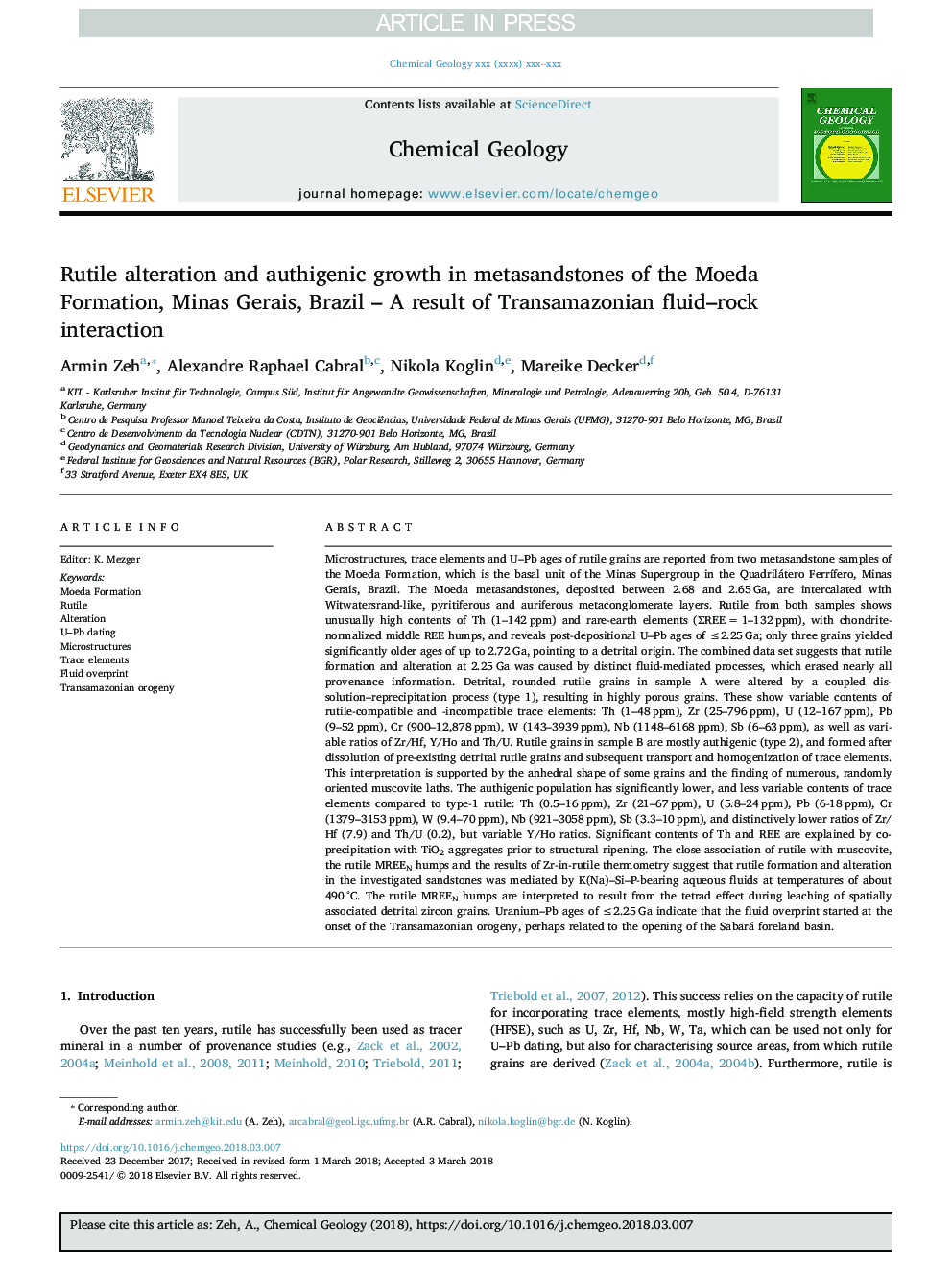| Article ID | Journal | Published Year | Pages | File Type |
|---|---|---|---|---|
| 8910297 | Chemical Geology | 2018 | 13 Pages |
Abstract
Microstructures, trace elements and U-Pb ages of rutile grains are reported from two metasandstone samples of the Moeda Formation, which is the basal unit of the Minas Supergroup in the Quadrilátero FerrÃfero, Minas Gerais, Brazil. The Moeda metasandstones, deposited between 2.68 and 2.65â¯Ga, are intercalated with Witwatersrand-like, pyritiferous and auriferous metaconglomerate layers. Rutile from both samples shows unusually high contents of Th (1-142â¯ppm) and rare-earth elements (ΣREEâ¯=â¯1-132â¯ppm), with chondrite-normalized middle REE humps, and reveals post-depositional U-Pb ages of â¤2.25â¯Ga; only three grains yielded significantly older ages of up to 2.72â¯Ga, pointing to a detrital origin. The combined data set suggests that rutile formation and alteration at 2.25â¯Ga was caused by distinct fluid-mediated processes, which erased nearly all provenance information. Detrital, rounded rutile grains in sample A were altered by a coupled dissolution-reprecipitation process (type 1), resulting in highly porous grains. These show variable contents of rutile-compatible and -incompatible trace elements: Th (1-48â¯ppm), Zr (25-796â¯ppm), U (12-167â¯ppm), Pb (9-52â¯ppm), Cr (900-12,878â¯ppm), W (143-3939â¯ppm), Nb (1148-6168â¯ppm), Sb (6-63â¯ppm), as well as variable ratios of Zr/Hf, Y/Ho and Th/U. Rutile grains in sample B are mostly authigenic (type 2), and formed after dissolution of pre-existing detrital rutile grains and subsequent transport and homogenization of trace elements. This interpretation is supported by the anhedral shape of some grains and the finding of numerous, randomly oriented muscovite laths. The authigenic population has significantly lower, and less variable contents of trace elements compared to type-1 rutile: Th (0.5-16â¯ppm), Zr (21-67â¯ppm), U (5.8-24â¯ppm), Pb (6-18â¯ppm), Cr (1379-3153â¯ppm), W (9.4-70â¯ppm), Nb (921-3058â¯ppm), Sb (3.3-10â¯ppm), and distinctively lower ratios of Zr/Hf (7.9) and Th/U (0.2), but variable Y/Ho ratios. Significant contents of Th and REE are explained by co-precipitation with TiO2 aggregates prior to structural ripening. The close association of rutile with muscovite, the rutile MREEN humps and the results of Zr-in-rutile thermometry suggest that rutile formation and alteration in the investigated sandstones was mediated by K(Na)-Si-P-bearing aqueous fluids at temperatures of about 490â¯Â°C. The rutile MREEN humps are interpreted to result from the tetrad effect during leaching of spatially associated detrital zircon grains. Uranium-Pb ages of â¤2.25â¯Ga indicate that the fluid overprint started at the onset of the Transamazonian orogeny, perhaps related to the opening of the Sabará foreland basin.
Related Topics
Physical Sciences and Engineering
Earth and Planetary Sciences
Geochemistry and Petrology
Authors
Armin Zeh, Alexandre Raphael Cabral, Nikola Koglin, Mareike Decker,
